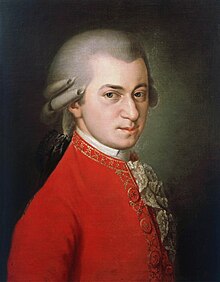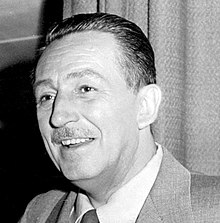

Wolfgang Amadeus Mozart (German: [ˈvɔlfɡaŋ amaˈdeus ˈmoːtsart], full baptismal name Johannes Chrysostomus Wolfgangus Theophilus Mozart (27 January 1756 – 5 December 1791), was a prolific and influential composer of the Classical era. He composed over 600 works, many acknowledged as pinnacles of symphonic, concertante, chamber, piano, operatic, and choral music. He is among the most enduringly popular of classical composers.
Mozart showed prodigious ability from his earliest childhood in Salzburg. Already competent on keyboard and violin, he composed from the age of five and performed before European royalty; at 17 he was engaged as a court musician in Salzburg, but grew restless and traveled in search of a better position, always composing abundantly. While visiting Vienna in 1781, he was dismissed from his Salzburg position. He chose to stay in the capital, where he achieved fame but little financial security. During his final years in Vienna, he composed many of his best-known symphonies, concertos, and operas, and the Requiem. The circumstances of his early death have been much mythologized. He was survived by his wife Constanze and two sons.
Mozart learned voraciously from others, and developed a brilliance and maturity of style that encompassed the light and graceful along with the dark and passionate—the whole informed by a vision of humanity "redeemed through art, forgiven, and reconciled with nature and the absolute." His influence on subsequent Western art music is profound. Beethoven wrote his own early compositions in the shadow of Mozart, of whom Joseph Haydn wrote that "posterity will not see such a talent again in 100 years."Music Style

A sheet of music from the Dies Irae movement of the "Requiem Mass in D Minor" (K. 626) in Mozart's own handwriting. It is located at the Mozarthaus in Vienna.
Mozart's music, like Haydn's, stands as an archetype of the Classical style. At the time he began composing, European music was dominated by the style galant: a reaction against the highly evolved intricacy of the Baroque. But progressively, and in large part at the hands of Mozart himself, the contrapuntal complexities of the late Baroque emerged once more, moderated and disciplined by new forms, and adapted to a new aesthetic and social milieu. Mozart was a versatile composer, and wrote in every major genre, including symphony, opera, the solo concerto, chamber music including string quartet and string quintet, and the piano sonata. These forms were not new; but Mozart advanced the technical sophistication and emotional reach of them all. He almost single-handedly developed and popularized the Classical piano concerto. He wrote a great deal of religious music, including large-scale masses: but also many dances, divertimenti, serenades, and other forms of light entertainment.
The central traits of the Classical style are all present in Mozart's music. Clarity, balance, and transparency are the hallmarks of his work, but any simplistic notion of its delicacy masks the exceptional power of his finest masterpieces, such as the Piano Concerto No. 24 in C minor, K. 491, the Symphony No. 40 in G minor, K. 550, and the opera Don Giovanni. Charles Rosen makes the point forcefully:
It is only through recognizing the violence and sensuality at the center of Mozart's work that we can make a start towards a comprehension of his structures and an insight into his magnificence. In a paradoxical way, Schumann's superficial characterization of the G minor Symphony can help us to see Mozart's daemon more steadily. In all of Mozart's supreme expressions of suffering and terror, there is something shockingly voluptuous.
Especially during his last decade, Mozart exploited chromatic harmony to a degree rare at the time, with remarkable assurance and to great artistic effect.
Mozart always had a gift for absorbing and adapting valuable features of others' music. His travels certainly helped in the forging of a unique compositional language. In London as a child, he met J.C. Bach and heard his music. In Paris, Mannheim, and Vienna he met with many other compositional influences, as well as the avant-garde capabilities of the Mannheim orchestra. In Italy he encountered the Italian overture and opera buffa, both of which deeply affected the evolution of his own practice. Both in London and Italy, the galant style was in the ascendent: simple, light music with a mania for cadencing; an emphasis on tonic, dominant, and subdominant to the exclusion of other harmonies; symmetrical phrases; and clearly articulated partitions in the overall form of movements. Some of Mozart's early symphonies are Italian overtures, with three movements running into each other; many are homotonal (all three movements having the same key signature, with the slow middle movement being in the relative minor). Others mimic the works of J.C. Bach, and others show the simple rounded binary forms turned out by Viennese composers.
As Mozart matured, he progressively incorporated more features adapted from the Baroque. For example, the Symphony No. 29 in A Major K. 201 has a contrapuntal main theme in its first movement, and experimentation with irregular phrase lengths. Some of his quartets from 1773 have fugal finales: probably influenced by Haydn, who had included three such finales in his recently published Opus 20 set. The influence of the Sturm und Drang ("Storm and Stress") period in music, with its brief foreshadowing of the Romantic era to come, is evident in the music of both composers at that time. Mozart's Symphony No. 25 in G minor K. 183 is another excellent example.
Mozart would sometimes switch his focus between operas and instrumental music. He produced operas in each of the prevailing styles: opera buffa, such as The Marriage of Figaro, Don Giovanni, and Così fan tutte; opera seria, such as Idomeneo; and Singspiel, of which Die Zauberflöte is the most famous example by any composer. In his later operas he employed subtle changes in instrumentation, orchestral texture, and tone color, for emotional depth and to mark dramatic shifts. Here his advances in opera and instrumental composing interacted: his increasingly sophisticated use of the orchestra in the symphonies and concertos influenced his operatic orchestration, and his developing subtlety in using the orchestra to psychological effect in his operas was in turn reflected in his later non-operatic compositions.








